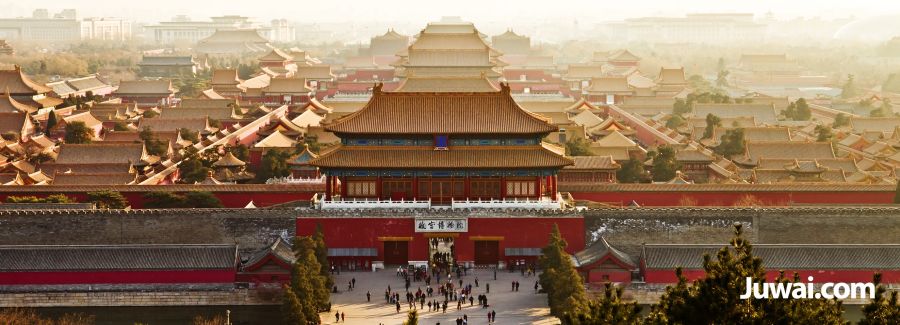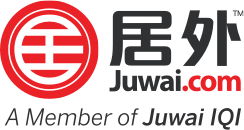You've successfully copied this link.
The 7 guiding principles of Chinese HNWI overseas property investors

[This article was originally published on Investment Migration Insider and written by Luc Lu (Shanghai/Singapore).]
In a pandemic world, where most business activities and travel have been, to a great extent, restricted, the downtime caused by coronavirus has allowed many of us to probe into several issues, particularly those relating to how the pandemic is affecting our own corner of the economy.
I’ve used some of the additional time afforded me by all this down-time here in Singapore to interview some Chinese veterans in the sphere of property development and understand their philosophy on overseas real estate investment. I’ve distilled their answers into seven guiding principles.
Chinese overseas investors adhere to these principles to varying degrees, and the smart ones adhere to all of them. If you want to understand how to better target, serve, and sell to such investors, you’ll need to understand what moves them.
#1 – Freehold is always preferable to long-term leasehold
Return on investment, in real estate as for any other asset class, naturally depends on timing. Few investors (none, actually) know exactly the right time to enter and exit an investment, and losses incurred need time to recover. Since properties almost invariably increase in value over the very long run, and that’s OK, provided there is no limit on how long you can wait to exit the market. Usufruct rights to a property (the right to reap the revenue generated by a property you own the rights to for a fixed time-frame, typically 40-70 years in China, depending on whether the property is commercial or residential) represent such a limit.
Freehold properties don’t exist in China; the government formally owns all properties, while the investor owns the right to enjoy the fruits of that asset for a set number of years. At the expiry of that lease, the government may grant an extension, at their discretion.
Generally speaking, individual HNWI investors have a longer investment horizon than retail or institutional investors. Consequently, they spend a great deal of time considering the long-term prospects of their property investments. Usufruct-based property markets don’t lend themselves easily to such long-term consideration.
This explains why the behavior of Chinese investors (and developers) in the domestic market is characterized by short-term speculation. It also explains why you granite buildings built to last for centuries on Wall Street, but not in Shanghai.
A common pattern of property investment among the Chinese looks like this: First, they built their wealth riding the rising economic tide in China and invested in properties domestically. Many Chinese got rich simply by buying more and more properties because the value of those homes kept appreciating. Then, once they had built a capital base worth preserving, they shifted that wealth to places like London, Vancouver, and Auckland, where freehold offers long-term protection for the principal.
In brief, any overseas market that doesn’t offer freehold property will, generally, not come under the consideration of Chinese HNWIs (although it may still draw the attention of short-term, not-yet-rich Chinese investors).
#2 – Prioritize property investments that allow for significant leverage
First, this is because mortgaged properties help lower the risk to the investor by transferring it to a bank. A bank will ask for an independent appraisal of the property’s value and issue a mortgage on that basis, allowing the investor to own 100% of the asset while only taking, say, 20% of the risk, plus the mortgage payment interest.
Second, leverage helps mitigate foreign exchange control restrictions. China’s capital controls, and the investor’s own foreign currency reserves, limit the range of foreign real estate options available to the investor. Unless they already hold significant parts of their wealth abroad or have international-source income, in the absence of mortgages, Chinese investors can only buy as much property abroad as they can remit to the overseas market. If you can borrow money overseas, however, the amount of currency you need to hold overseas is reduced by a factor of (typically) five.
Third, overseas sources of leverage allow investors to scale their investment. If you have access to overseas bank loans, you can buy several times more real estate for the same capital outlay. A commonly observed manifestation of this is the tendency for Chinese investors to buy more property in the same development or region following the initial success of their pilot investment.
#3 – Rely on exchange rates when evaluating investment opportunities
The Chinese property investment old-hands I spoke to all stressed the importance of hedging against currency fluctuations and preparing to take advantage of opportunities abroad by converting their RMB-denominated capital to a reliable foreign currency (most pointed to USD) well before the planned investment date.
This practice may not only allow you take advantage of great opportunities at short notice and protect yourself against RMB-devaluation but could also present a significant opportunity in itself, through forex-fluctuation gains.
#4 – Location, location, location
No point elaborating much on this time-tested piece of advice except to say that seasoned property investment veterans uniformly agree that geographic situation, both within and between countries, is the single most important criterion in investment evaluations.
#5 – Qualified real estate agents and lawyers are a necessary form of insurance
I once met an exceedingly rich Chinese man who owned a dozen houses in Singapore (in addition to properties elsewhere in the world). As part of his routine property investment analysis work, he would delegate different tasks to different professionals – including lawyers, real estate agents, and even geopolitical analysts – so as to always feel comfortable he had top-notch intel and asset protection.
When evaluating a particular property’s ROI potential, he would take into account not only the projected trajectory of property values, but also the consequential stability of rental income, currency fluctuations, policy and political risks, and taxes.
The “big fish†among Chinese property investors who focus on overseas real estate all have extensive teams to help them flag risks and opportunities that no single person alone can identify.
#6 – Ask for historical transaction records of neighboring properties
Veteran Chinese property investors have learned not to take Cypriot, Greek, or Portuguese brokers’ word for the value of a property. Especially when buying directly from a developer. Many will ask to see (or seek out on their own) the historical records of sales prices of comparable properties in the neighborhood.
#7 – The land upon which the building is constructed is more important than the building itself
Smart Chinese property investors are not dazzled by the opulent furnishings and sleek finishes of model apartments. They know that, unlike the land upon which the unit is built, the interior decoration depreciates over time.
Land, on the other hand, can never be acquired by the investor at its initial cost, because the initial cost of land was whatever the state spent to acquire it through warfare and invasion hundreds, maybe thousands of years ago.
And that is exactly the inherent attractiveness of land as an asset category; “God†doesn’t make more of it. The tiny share of the world’s land areas that have been reclaimed from the sea is an exception to this rule, of course.
If your target buyers are Chinese investors, make sure you have an answer to the question; “what will this piece of land be worth in 20, 50, or 80 years?â€.
There is, of course, a nearly infinite number of additional considerations for Chinese investors to take into account when acquiring foreign real estate, but the ones listed above form the basis of the Chinese HNWI overseas property investor philosophy.
Source: Investment Migration Insider
Liked this article? Sign up for free to get Juwai Juwai Asia Market updates!
2025 © Juwai. All Rights Reserved Privacy Policy | Terms of Service


